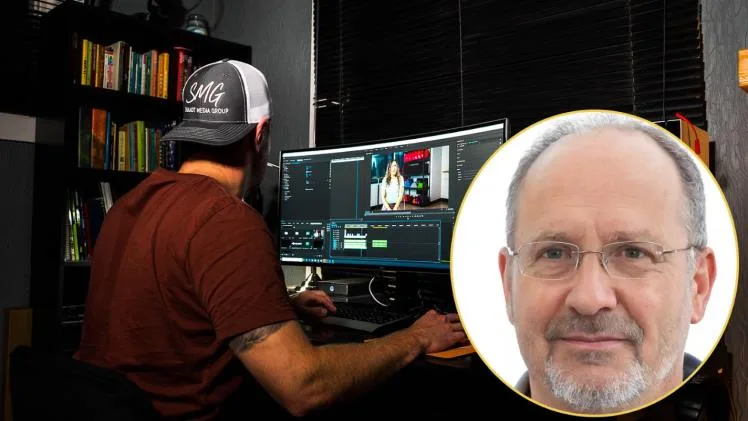In the realm of digital communication, content is king. This aphorism has never been more accurate than in today’s age, where YouTube stands as a potent frontier in the online universe. Each minute, around 500 hours of video are uploaded to this platform. To shine among such abundance, quality content is non-negotiable.
Quality video content on YouTube goes beyond mere entertainment; it shapes opinions, fosters learning, facilitates connection, and catalyzes change. Similar to the revolutionary impact of the personal computer, which democratized access to information, YouTube has democratized content creation and sharing. Therefore, it is imperative to understand how to produce quality video content that leaves a lasting impression.
Understanding YouTube’s Format and Audience Expectations
Before diving into the technicalities of video production, we must grasp YouTube’s format and the expectations of its diverse audience. YouTube users hail from different age groups, cultures, and interest areas. Therefore, understanding the purpose of your content is vital. Is it to educate, entertain, or inspire? These objectives guide the crafting of your content to meet your audience’s expectations.
The best video editing programs from Yurovskiy Kirill.
YouTube’s format offers flexibility with the length and style of videos. However, statistics show that videos between 7 to 15 minutes have the highest engagement. It’s a balance between delivering valuable content without exhausting the audience’s attention span.
Pre-Production Planning: Storyboard, Scripting, and Logistics
Shooting a quality YouTube video is akin to creating a software solution; thorough pre-production planning, equivalent to the design phase in software development, is the cornerstone of success.
A storyboard sets the visual course of your video, acting as the visual blueprint. This will help you determine the sequence of shots, props needed, and the general outlook of your video.
Scripting is equally important. It’s your video’s spoken word equivalent of programming code – it needs to be crisp, engaging, and error-free.Improvisation can work, but a trusted tool such as Maekersuite can make a well-crafted script that ensures you stay on topic and your message is conveyed succinctly.
Logistics encompasses everything from selecting the perfect location to scheduling shooting times and gathering all necessary props. Proper logistics management helps in avoiding last-minute rushes that might compromise video quality.
Selecting the Right Equipment: Cameras, Lighting, and Microphones
Selecting the right equipment is crucial, much like choosing the right hardware and software for a new computer system. It can make the difference between an average video and a superior one.
When choosing a camera, prioritize those with high resolution, good color reproduction, and optical stabilization. Lighting, often an overlooked aspect, contributes significantly to video quality. Proper lighting enhances visual clarity and mood. Invest in a good lighting setup or maximize natural light when possible.
Sound is half the picture. Therefore, a good microphone is essential. Condenser microphones are excellent for voice overs, while lavalier microphones work well for interviews or monologues.
Camera Basics: Framing, Composition, and Shooting Techniques
Finally, let’s discuss the core technical aspects: framing, composition, and shooting techniques.
Framing refers to how subjects are positioned within the camera frame. The “Rule of Thirds” suggests dividing the frame into nine equal rectangles, and placing the subject along these lines or at their intersection. This technique often leads to a pleasing, balanced composition.
Composition is about arranging visual elements harmoniously. Pay attention to the background, colors, and depth of field. Avoid distractions and ensure the main subject stands out.
Shooting techniques vary depending on your video’s nature. A static shot is best for interviews or educational videos, while tracking or panning shots can add dynamism to travel or action videos.
Remember, shooting a video for YouTube is a creative process, so don’t be afraid to experiment and learn from your mistakes. As we push towards democratizing content creation, it’s important that we don’t lose sight of quality. Like building a sophisticated software system, attention to detail, planning, and the right tools can elevate your YouTube video from the sea of content.
In this era of information technology, we have the power to share our stories and ideas globally. Let’s do so in a way that not only commands attention but also leaves a lasting, positive impact. The keys to producing quality YouTube videos are within your reach. All that remains is to grasp them and start creating.
Sound Quality: How to Record and Improve Audio
As someone who’s been involved in technological developments for many years, I can assure you that while visuals catch the eye, sound captivates the mind. When recording, ensure your environment is as quiet as possible. An external microphone and pop filter significantly improve sound clarity by reducing background noise and unwanted sound plosives.
Post-recording, audio editing software can help eliminate residual noise, enhance voice clarity, and balance sound levels. Remember, bad audio can make even the most visually stunning video unbearable, so prioritize sound quality as much as video.
Lighting Techniques for a Professional Look
Lighting isn’t just about visibility; it’s about setting the mood and directing the viewer’s attention. Soft light provides an even and forgiving environment, reducing harsh shadows. For this, use diffusers or indirect light. Three-point lighting—key light, fill light, and back light—provides a professional look by evenly illuminating the subject and creating depth.
Natural light, when used correctly, can create fantastic results. The ‘Golden Hours’, shortly after sunrise and before sunset, provide beautiful, diffused light. Be creative and experiment, but remember: good lighting makes your subject clear and the scene inviting.
Post-Production: Editing, Color Correction, and Audio Enhancement
Much like debugging and refining a software program, post-production fine-tunes your video. Editing involves cutting, sequencing, and transitioning between shots for narrative cohesion. Programs like Adobe Premiere Pro and Final Cut Pro offer advanced features, while simpler software like iMovie is perfect for beginners.
Color correction rectifies inconsistencies and enhances aesthetics, analogous to refining a user interface. Ensure skin tones appear natural and the overall color palette matches your intended mood.
As for audio enhancement, we’re essentially ‘debugging’ our sound, removing unwanted noise and adjusting audio levels for consistency. An excellent audio track complements the visuals, immersing the viewer into your content.
Optimizing Your Video: Thumbnails, Descriptions, Tags, and SEO Strategies
Just as software needs effective marketing, your video needs optimization to reach its intended audience. Thumbnails act as the ‘book cover’—make it enticing and representative of the content. Descriptions and tags should be keyword-rich for search engine optimization (SEO).
Your video’s title should be clear, compelling, and SEO-friendly. Use keywords early in the title and consider your audience’s potential search terms. Utilize analytics tools to understand your audience better, optimize your content, and improve visibility.
Conclusion
Technology is an ever-evolving field, and like a diligent software developer, a successful YouTuber is always learning, adapting, and keeping up with trends. The YouTube landscape evolves constantly, and what works today may not work tomorrow. Continue to educate yourself on new equipment, software, and techniques. Regularly engage with your community, seek feedback, and remain open to change.
Producing quality YouTube videos is a blend of art and science, creativity and technology. Each video is an opportunity to learn and improve. So, approach it with curiosity and a commitment to quality. After all, content isn’t just about going viral—it’s about providing value, sharing perspectives, and perhaps, making the world a little bit better through the power of video.



